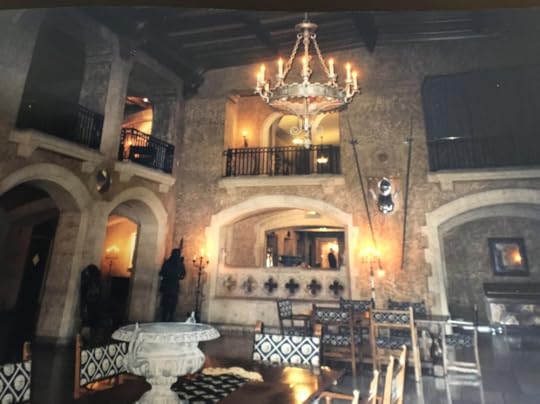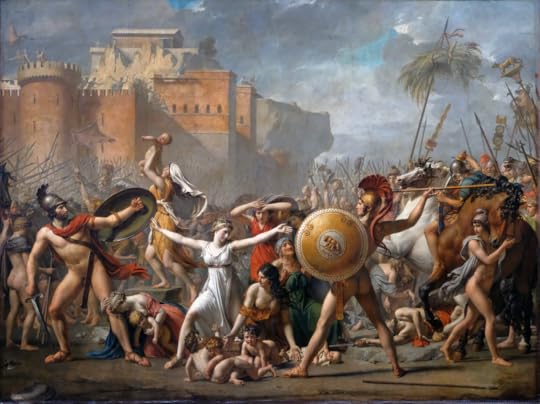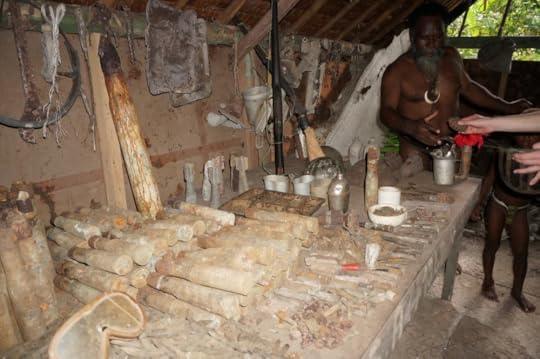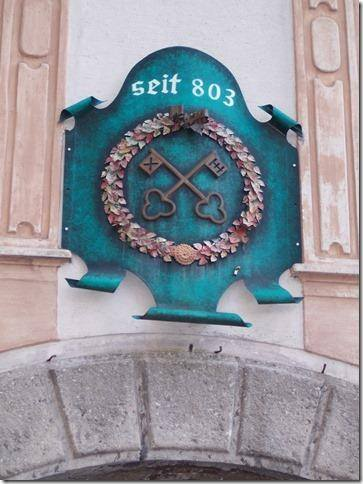Tammy Lowe's Blog, page 5
July 31, 2023
Story Time...

Grab a cup of tea and get comfy for I shall tell you a story.
A long time ago, there lived a young man named Farhad. Farhad was in love with a beautiful Persian princess, Shirin.
All the villagers teased Farhad, for he was a simple rock carver. Not only that, Shirin was already betrothed to Prince Khusrow. That didn’t bother Farhad though. He vowed to sweep the princess off her feet—somehow.
Eventually, he carved her image into a rock. “That’s sure to get her attention,” he said to his friends.
A jealous Prince Khusrow heard about the beautiful carving and said to Farhad, “Very impressive. I tell you what...if you carve a staircase into the mountain, I will give Shirin up for you.”
Jumping at a chance to win Shirin’s hand in marriage, Farhad accepted the challenge—a challenge Prince Khusrow knew was impossible. It was his way of exiling the handsome stone carver.
Day after day, week after week, month after month, Farhad worked from dawn till dusk, chipping away at the rock.
To everyone’s shock, he made progress of the incredible task.
When it became clear Farhad would indeed finish the staircase, Prince Khusrow concocted another plan.
“I come to tell you the terrible news myself,” Prince Khusrow said while wiping away fake tears. “Princess Shirin has had a terrible accident. She’s dead.”
Farhad’s shoulders slumped and he stood speechless, watching the Prince walk away, seemingly heartbroken himself. Overcome with grief, believing Shirin was dead, he climbed the mountain staircase he’d carved and jumped to his death.
But…Because his love was so pure and real, wherever his blood spilled, a red flower appeared.
Over time, they multiplied.
Eventually, these blood red flowers grew wild throughout all of Persia.
Centuries later, some Ottoman Turks saw these wild flowers growing. They dug them up and brought bunches back to Constantinople.
“Simply exquisite,” the mesmerized sultan said. “Tell me, what are these flowers called?”
“Well, your Majesty, if you look at the shape…like a small turban…we’ve taken to calling them—”
“Tulips!” the sultan said with a hearty laugh.
At that time in history, the Latin word for turban was tulipan.
“I like that. They are to be cultivated here from now on.”
Eventually, the palaces of Constantinople were adorned with colourful tulips. The Turks were in love with the spring flowers.
One day, the Ambassador of the Holy Roman Empire sent some bulbs to a friend in Vienna. The man didn’t know what to do with them, so he buried them in a big heap. Of course, the tulips came up and when they matured, he dug some up and gave them to a friend.
This friend didn’t know what to do with the bulbs…so he fried them up with oil and vinegar and ate them.
By the 16th century, wealthy people began to purchase bulbs in Turkey to sell to Venetian merchants. Before long, Tulipmania began. From France to Flanders, the value of tulips increased by the day. Monks grew them. The Dutch were obsessed with them. In the early 1600’s, tulip bulbs became an actual currency.
From 1634-1637, people left their homes, spouses, and jobs to become tulip farmers. One particular variety of bulb cost:
-36 bushels of wheat
-72 bushels of rice
-4 oxen
-12 sheep
-8 pigs
-2 barrels of wine
-4 barrels of beer
-2 tons of butter
-1000 lbs. of cheese
-a bed
-clothes
-and a silver cup
Another farmer paid twelve acres of land, while another paid with a carriage and twelve horses.
One wealthy man paid for a bulb, by its weight in gold. When he found out a poor cobbler owned the same variety of tulip, he bought that one as well…and then stepped on the bulb.
“I am the only one who owns this variety now,” the man sneered at the wide-eyed cobbler. “And I’d have paid you ten times that amount, you fool!”
Upon hearing that, the cobbler became so depressed, he went up to his loft and hung himself.
Eventually, the prices of tulips dropped and livelihoods were lost, but not our admiration of these beautiful spring flowers. To this day, they remain a symbol of deep and perfect love.
Like Farhad’s.
And there’s your interesting fact of the day. The fascinating history of…tulips.

July 30, 2023
Story Time...

The Statue of d'Artangnan
Maastricht, Netherlands
Gather round for story time! Today we’ll head back in time to...
*Presses buttons on time machine*
17th century France.
Think opulent palaces and vast gardens. Swashbuckling sword fights, King Louis, and…Charles de Batz de Castelmore d’Artagnan.
Better known simply as — d’Artagnan.
To recap, The Three Musketeers is the tale of d’Artagnan, an adventurous young man who travels to Paris hoping to join the king’s elite team of Musketeers. Throughout the story he proves himself worthy to fight alongside Athos, Porthos, and Aramis.
Although infamous due to Dumas’ novel, d’Artagnan was NOT fictional. He was a real, legendary musketeer who rose through the ranks, eventually becoming Captain.
Now, in September of 1661, d’Artagnan was in charge of a very high-profile political prisoner—Nicolas Fouquet. What happened in real life is just as crazy as one of Dumas’ novels.
The story goes like this:
Fouquet is France’s Minister of Finances. He was a charismatic, flamboyant young man who became very rich.
I’m talking CRAZY rich.
Wanting to show the world he "arrived", Fouquet hired France’s top architect, top painter, and top garden designer. He ordered them to work together to build him a glorious chateau and grounds unlike anything ever seen before.
Fouquet had a near limitless budget.
-18,000 men carved the palace gardens from the landscape.
-190 acres of farmland, a village, and two hamlets were cleared out and a river diverted to create Fouquet’s garden.
-Beneath the garden, six water reservoirs were engineered for dancing fountains, pools, and canals.
When the palace and garden were complete, it was not only beautiful; it was a statement of political power. So, on August 17th, 1661, Nicolas Fouquet threw a lavish party to celebrate its completion.
6000 invitations were sent out, including one to King Louis, who was 22 years old at the time.
Fouquet commissioned a play, a ballet, and fireworks to delight his guests.
Everyone agreed it was a great success—
Except for the King.
Louis flew into a jealous rage. He was furious at the arrogance of Fouquet, showing he was richer and possibly even more powerful.
So what does Louis do?
Well, he has Fouquet arrested for embezzlement and high treason.
Enter d’Artagnan, the king’s most trusted musketeer.
D’Artagnan spent the next three years (from the arrest to the prosecution) in charge of Fouquet.
Meanwhile, Louis took the architect, the painter, and the garden designer, telling them to turn his hunting lodge—at Versailles— into a palace and garden like Fouquet’s….only BETTER.
In January 1665, found guilty, Nicolas Fouquet’s sentence of banishment seemed too lenient to King Louis, so Fouquet was ordered to spend the rest of his life in prison—in solitary confinement.
However, Fouquet was allowed to have a personal valet to attend to him.
(Can you imagine that job?)
Now…the legend doesn’t end here.
You see, the valet was a mysterious prisoner named Eustache Dauger.
Made to wear a black velvet mask at all times, Dauger was never to speak to other prisoners or show his face. The name was clearly an alias. He was thought to be a man who knew too much--privy to some “secret”. However, Dauger was ordered to be man-servant to Nicolas Fouquet because Fouquet was never going to be released from solitary confinement, let alone see the light of day.
So, how does it end for everyone historically?
~In 1673, King Louis leads his musketeers into battle in Maastricht during the Dutch Wars, with his English allies. With the town surrounded, d’Artangnan’s company took control of a gate. However, an English duke ordered them to cross the open ground. Although d’Artagnan advised against the action, he had to obey.
On June 25th, 1673, the legendary captain of the Musketeers made it to the ramparts of Maastricht before dying from a musket ball to the throat.
That evening, Louis wrote to his wife, Maria Theresa:
“Madame, I have lost d’Artangnan, in whom I had the utmost confidence and who merited it all on occasions.”
~As for Nicolas Fouquet, he died in prison in 1680.
~In 1682, The Palace of Versailles, a former hunting lodge, became the principal royal residence, having been completed for King Louis by Fouquet’s original team.
And the masked valet, Eustache Dauger?
He died on the 19th of November, 1703 at the Bastille in Paris.
His criminal charge remains unknown, as does his true identity.
But he’s better known today as—
The Man in the Iron Mask.
July 29, 2023
Story Time...

Storytime! Here’s an oldie, but a goodie...
So, it’s October in Canada and we’re touring the Rockies.
After spending a few days at Chateau Lake Louise, horseback riding through the woods and hiking around the turquoise lake with our five-year-old son, Quinton, we check out and head over to the Banff Springs Hotel for the next stop on our latest adventure.
The Banff Springs Hotel opened in 1888. Styled after a Scottish Baronial Castle, it looks straight out of a storybook. It’s nestled in the heart of a picturesque town, in the middle of a national park, where deer and elk graze nonchalantly as you walk by quaint little shops.
Once inside, I soon discover the hotel is a maze of hundred-year-old corridors. Elevators are here and there. Huge rooms and staircases appear in the middle of nowhere.
I am in love.
To get to our suite we leave the main lobby, walk up a grand staircase, and head down a long corridor. From there, enter Mount Stephen’s Hall; an imposing medieval-inspired banquet hall with balconies and an oak-beam coffered ceiling.
After exiting Mt. Stephen’s, we continue along several additional hallways, turning left and right, up and down some more staircases, until we reach the Tudor Wing.
From there, take a lone elevator down a few floors. It’s tiny, old and derelict looking, but this is the route.
Continue along some more empty halls and then....we finally reach our suite.
It’s all by itself in an isolated, gothic looking alcove.
But, as expected, the suite is beautiful—bedroom to the left, sitting room to the right, all the windows overlooking huge mountain peaks and the Bow Valley below.
Close my eyes and we’re in Europe...or even fictional Arendelle, waiting for Elsa’s coronation.
Everything is old and beautiful...yet oddly eerie.
It’s October.
Halloween season.
I have a five-year-old son, so I promise to take him on a ghost hunt around the hotel later that evening.
You see, at home my son’s going through a “Ghostbusters” phase. He loves the movie. So much so that we’ve made a ghostbusters backpack from an old cereal box, craft paint, and a bunch of buttons and gadgets from Home Depot. A dryer vent hose completes the proton pack.
Even pre-Pinterest, it’s awesome.
Evening comes and the three of us set out to explore this enormous and *famously* haunted old place.
However...none of the staff will talk about it.
Believe it or not, in some U.S. states, if a hotel is possibly haunted, they have to disclose reports of that nature to you *if asked*.
But not here.
“Ghosts? There are no ghosts here,” concierge tell us, much to our disappointment.
It’s supposedly the most haunted hotel in Canada, yet it’s clearly verboten for employees to speak of.
We finally find a good sport who looks over his shoulder before whispering, “we’re not allowed to talk about it...but go to the main elevators, hit the sixth floor, and then turn right.” The guy then winks at little Quinton.
Score!
So, we head to the main wing, straight to the bank of elevators.
The second elevator on the left opens.
We get off on the sixth floor and start down the quiet hallway. Gloomy, orange lights add to the atmosphere.
Creepy medieval pictures hang on the walls.
We pass rooms 662, 664, 666...
We’re tiptoeing along, totally having a great time. Ahead looms the end of the hall the man told us about and it’s the eeriest thing you’ve ever seen.
It’s actually the wing where royals stay if/when they come.
Orange electric candles flicker on the walls of this alcove. Pictures of royals, like King Henry, stare down at you. Chills run up my spine and I have to remind myself we’re just playing pretend with our five-year-old.
Quinton is sitting on a sofa, taking it all in, when a maid comes out of the royal suites.
We start talking.
“Come inside and see,” she says to him.
So, we explore the empty rooms, thank her, and then walk back to the elevators.
Once again...the second elevator on the left opens its doors.
We get on, get off at another floor, and explore some more.
We head back to the elevators, and...the second elevator on the left opens its doors.
We continue this for several floors. Every single time, the same elevator picks us up, as if waiting for us. My husband and I are giving each other bewildered looks by this point.
We watch other people come and go and ALL the elevators are in service. Yet, as soon as Quinton’s done exploring a floor, we head back, push the button, and the second elevator on the left opens its doors.
It’s now happening way too often to be a coincidence.
When finally done exploring, and ready to go out into the village for a tasty treat, we head back to the elevators and push the button.
“Betcha I know which elevator is going to come,” I joke nervously.
However, the fourth one down opens up instead.
“That’s a change. I thought for sure—”
The doors suddenly slam shut.
We all freeze, slowly turn our heads, watching in disbelief as the second elevator on the left opens its doors for us.
I swallow the lump in my throat.
Okay, this was only supposed to be make-belief fun, but we’re all looking at each other wide-eyed. We shuffle onto the elevator and Quinton pushes the button for the lobby.
When we reach the lobby, the doors open like normal. As we move to step off, they slam shut again. Then, they begin to open and close, over and over again, fluttering madly for several moments before stopping.
We spill out they moment they stop.
They slowly close behind us again as we walk away.
It felt like an old, invisible elevator operator was standing there—having a bit of fun himself.
A few days later we’re in the airport, flipping through books for sale in the terminal.
My husband finds one about The Haunted Rockies. In it is a section on the Banff Springs Hotel. The tales went on about a ghost bride, a deceased bellboy, a mysterious room with no doors or windows, and...
A certain haunted elevator.
Anyone wanna bet it’s the second elevator on the left?
July 28, 2023
Story Time...

By Mbzt - Own work, Public Domain, https://commons.wikimedia.org/w/index...
Thousands of years ago there was a king named Numitor (I'll call him Num-Num). He ruled Alba Longa, an ancient city in Italy.
Num-Num had a daughter...Princess Lea.
I mean Rhea. Princess Rhea.
One day, Princess Rhea's uncle, Amulius (Uncle Amu), comes to town and steals the throne, declaring himself King of Alba Longa. In order to stop Rhea from having a rightful heir, she is forced to become a Vestal Virgin.
If you don't already know-- Vestal Virgins, similar to nuns, worship the goddess Vesta. Those who break their chastity vows are sentenced to death.
So, Princess Rhea, now basically a chaste nun, somehow ends up pregnant. To everyone's amazement, the baby-daddy turns out to be Mars. You know him...the good ole god of war.
Rhea gives birth to twin sons, Romulus and Remus.
Word gets back to Uncle Amu. He demands the twins be drowned in the Tiber River.
Desperate to save her babies, Rhea puts them in a little wooden trough and they float away, eventually coming to rest beneath a holy fig tree.
Luckily...the baby boys are found and rescued.
Unluckily, they are found and rescued by a wolf and a woodpecker.
But, the she-wolf suckles them and the woodpecker feeds them by dropping food in their mouths.
One day the babies are found by a shepherd named Faustulus. Fausty and his wife raise the boys and give them a happy childhood. However, when they are older, they head back to Alba Longa, kill Uncle Amu, and hand the throne back to Grandpa Num-Num.
On April 21st, 753 BC, the adventurous young brothers decide to build a town of their own on the very site where they were rescued.
However, these hot-headed brothers get into a little tiff.
"I want to build our town on this hill."
"No! It needs to built here on this hill!"
Finally, Romulus tells Remus to bugger off and builds a wall where he plans to start his city.
An extremely ticked off Remus jumps over the wall.
Romulus responds by killing his brother and naming the city after himself.
Rome.
So, needing to populate his newly established town, Romulus lets all the convicts and fugitives in, promising them asylum. Rome grows and grows and grows, populated by strong men able to defend their city from other tribes.
However, they soon realize the real problem isn't threats from neighbouring tribes. It's the fact they have no way to grow their population.
"Doh! We have no women."
Crap!
So, the Romans go around asking all the neighbouring tribes to let them marry their daughters.
"No way!"
"Nuh-uh."
"Never!"
"Are you out of your minds?"
With zero success, Romulus comes up with a plan.
He sends party invitations far and wide.
Dear Neighbour:
You are herby invited to the event of the season.
Come see our fabulous new town, Rome.
Mark your calendars.
Games, shows, and sacrifices provided.
Date: 8th century BC.
Time: In the evening
Please RSVP
Almost everyone says, "thanks...we're busy that night."
Except the Sabines.
Out of curiosity, their entire population shows up--men, women, children...
They're all having a great time, partying the night away, when Romulus stands, picks up his cloak, and throws it over his shoulder, probably looking totally cool in the process.
However..that was the signal to the Roman men.
It was a mass abduction of the unwed Sabine women.
In a flurry of chaos, every Roman man grabs a wife. Not wanting to kill the Sabine men, the fathers and brothers of their new wives, they run them out of Rome instead.
About three years later, the Sabines finally get it together enough to come back to rescue the women. All the men go to battle, swords clashing between the Romans and the Sabines.
But then something happens.
The women step in between the warring men.
"We'd rather died than see this bloodshed continue between our fathers and brothers against our husbands."
The Sabine women have settled into their new lives, many mothers now.
Moved by their speech, the men all agree to stop fighting and a peace treaty is signed.
The Sabines and Romans would be united under Rome, making both of them even stronger.
Romulus and the king of the Sabines would be co-rulers together.
A short while later the king died and Romulus was sole ruler of Rome again.
And there you have it.
The founding of Rome.
July 27, 2023
Interesting Fact of the Day...
The Temple of Hatshepsut in Luxor

I have a REALLY fascinating fact of the day for you, with an extra dose of intrigue thrown in for good measure. Grab something cold to drink and read on...
Here we are in The Valley of the Kings, in front of a temple built for one of Egypt's most important and fascinating pharaohs--Hatshepsut.
After a daring power grab, Pharoah "Hatty" ruled for more than twenty years, building great temples around Thebes and authorizing incredible trade expeditions, bringing vast treasures back to Egypt.
However, Hatshepsut's successor, step-son Thutmose III, was hell-bent on erasing Hatty from history. "Thutty the third" (not his real name) nearly succeeded, for almost every statue and painting of the bearded and muscular Pharaoh Hatty was destroyed.
The part I find most intiguing is this:
Many scholars think Pharaoh Hatshepsut, when a teen-ager, may have been the biblical Egyptian princess who rescued and adopted baby Moses from the Nile River.
Yes...Hatshepsut was female.
The much-loved daughter of Pharaoh Thutmose I, Hatshepsut became Queen of Egypt at the age of 12, after her father's death. When her husband died, the throne went to her infant step-son, "Thutty the third". (Hey...it's easier for me to keep everything straight when I give them nicknames)
So....Hatty became acting regent since the future pharaoh was just a baby. However, for reasons lost over time-- either an ambitious power grab, a political act to save the throne for her step-son, or perhaps it was to give the throne to her adopted son, Moses, we'll never really know. All we know is that Hatshepsut stepped in and declared herself Pharaoh.
Not Queen.
Pharaoh.
She never hid the fact she was a woman. Everyone knew. But, in those days, thousand of years B.C., there was no way to portray she was a Pharaoh and not a Queen. Her statues were all made masculine as a simple way of communicating her true power and authority.
Some scholars have put together a timeline that lines ups with the biblical story in Exodus. The theory fits together nicely, right down to the destruction of her memory afterwards by her step-son, Thutmose III.
So, while in the Cairo Museum, I stared down at the mummified remains of one of the most amazing women in history, Hatshepsut, wondering if there's even more to her story than we'll ever know.
It simply astounds me.
Story Time...
Meeting Chief

Christmas Day.
We're on a tiny island somewhere in Melanesia. I recall we're somewhat safe because there haven't been any cases of cannibalism since 1968. *Gulp*
Anyhow, this is the day we met Chief.
It all began with an English-speaking local named Samuel. Samuel wanted to show us a real village, but he has to get permission from Chief first.
My heart is pounding while he talks to Chief-- a big guy, standing in the distance, dressed only in a palm frond.
Permission is granted.
Chief blows on his conch shell and leads us into his village.

I'm nervous, realizing we're on some tiny island, in the middle of nowhere, heading into the jungle with strangers.
Naked strangers, I might add. Well, except for Samuel. Thank Goodness.
Anyhow, Samuel is the only one who speaks English, but all the villagers are so nice- full of smiles.
The young boys come out to see us. Reluctant at first, they eventually become excited, showing us their games: drawing pictures in the sand, showing us their pet pig, and their spider garden.

Yes...they actually have a spider garden for their pet spiders.
Other men show us their cooking and where they store their food. They are surprisingly proud of the palm leaf covered pits where they store their bananas.
"Not monkey bananas," Samuel tells us. "Other kind of bananas."
Good to know!
The women and girls are sitting together, weaving palm fronds.
At one point we see a single isolated little hut. It looks quite inviting.
Samuel explains that a woman will go there when she is menstruating.
Really?
Yup. Once a month, the women in the village go to isolated private huts and chill by themselves. While they deal with their PMS, the husbands deal with the children.
When their period is finished, and they feel better, the women come back to the village. They're happy and refreshed.
What a wonderful way to treat their women.
But, it wasn't always that way.
In the long ago past, this was their courting ritual:
When they'd find the village girl they wanted to marry, they'd punch her in the face and drag her home. Now, she's their wife. The added bonus is she'll probably have missing teeth and not be attractive to other men.
In the late 1700's, when missionaries were visiting the islands, trying to convert them to Christianity, they convinced the men to consider a different courting ritual that didn't involve violence. Like, you know...talking to her.
During WWII, the USA temporarily took over the island. The poured concrete still remains. When the war was over and the military left, all the items left behind were collected and stored in their new "museum."
Chief proudly took us into the hut to show it all off:


They have an abundance of food on the island and use bamboo as pots...

And that, dear reader, was the memorable Christmas Day we were welcomed, with open arms, into Chief's village.
We'll never meet again, but we'll never forget him.
Story Time...

At the foot of a mountain in the Sichuan province of China, there is a spot where three rivers meet. The waters were incredibly rough. Merchants shipping goods had a horrible time navigating and many fishermen would drown.
So, after praying and praying, a monk named Haitong decides they should build a statue of Buddha here. Perhaps God will be pleased and calm the waters for them.
In order to raise funds for the project, Haitong travels far and wide. After many years, he finally has enough money for workers to carve Buddha into the side of the mountain. However, the city government is completely corrupt. Instead of authorizing the construction, they send soldiers who tell Haitong to hand over the money.
Haitong refuses.
And to show how serious he is...
He gouges his eyeballs out.
A bit overkill, but hey, it worked.
The soldiers take off-- scared of the crazy, blind monk.
It's the year 713 AD and construction begins.
They get the head carved.
They get the shoulders carved.
And then they ran out of money.
And then Haitong dies.
Years later, a Sichuan official is able to get more funding and construction begins again.
They get the Buddha statue carved all the way to the knees. But...now the Sichuan official helping gets transferred to another city and everything comes to a halt again.
Forty years later, a wealthy man comes along and donates his entire salary to finish it.
The beautiful carved Buddha, at over 232 feet tall, was completed in 803 by Haitong's "students". It took 90 years.
To give you an example of the size of this Buddha, the instep of his foot is so large, about 100 people can stand on it.

The Leshan Giant Buddha
My favourite part of this whole story?
Remember I said Haitong originally wanted to carve the Buddha so God might calm the waters?
Well, all the rock they removed from the side of the mountain went into the water and ended up calming it. Haitong's prayer was answered...in a roundabout way.
And there you go. Your interesting fact of the day: The Leshan Giant Buddha.
Interesting Fact of the Day...

If you google “oldest restaurant in the world, the result is Sobrino de Botin in Madrid, Spain, founded in 1725. The problem with this record is that it’s the oldest—due to a technicality.
If you ask me, the oldest restaurant in the world is actually in Austria, established in 803.
So, come with me. We’re going to Salzburg.
The year?
*Pushes buttons on time machine*
1507
Not far from the city’s fortified castle is St. Peter’s abbey. Diners have been welcome here at St. Peter’s Stiftskeller (St. Peter’s Cellar) by Benedictine monks since the ninth century.
If you’ve been following along with these blog stories of mine, you might remember the legend about the Aachen Cathedral. In the year 796, Charlemagne left the city to fight the Saxons. Before leaving he told the town council he wanted a cathedral built by the time he returned. Against all odds, they did it. A huge cathedral was built in a record nine years— after the city-folk made a deal with the Devil.
Well, Charlemagne may have been off at war, but a man still needs to eat. So, he made his way to St. Peter’s Stiftskeller after hearing about its beer, which had been praised in a poem.
In 1492, Christopher Columbus dined here before he set sail, and it goes without saying that Mozart was a frequent patron as well.
I know what you’re saying...
“Oh my gosh, Tammy…why on earth isn’t THIS the oldest restaurant in the world? It’s more than a thousand years old!”
Well, the only reason the title went to the Madrid eatery is because St. Peter’s Stiftskeller had to close several times in history—like during the Napoleonic Wars— while the Spanish one has been in continuous operation since the 1700’s.
So, why did I set my time machine to the year 1507?
Johann Georg Faust.
Although the legend and history of the man have blended over time, it is said that Faust was an old German alchemist; a magician and astrologer, physician and philosopher.
In reality, he was most likely a con-man.
The story starts like this:
Faust is old, near the end of his days. He’s preparing a poison to end his life, feeling like he’s missed out on everything—mainly women. Before he can drink it, he hears a choir singing outside.
It inspires him—to call upon the Devil.
The Devil shows up.
He’s a funny, good-looking charmer named Mephistopheles. “What can I do for you?”
Faust asks to be turned back into a young man so he might find love.
“Yeah. I can do that. No big deal,” Mephistopheles says.
“What’s the catch?”
“No catch.” To entice him, the devil shows Faust an image of a beautiful young woman named Marguerite. “But you’re mine in the afterlife.”
Faust agrees and Mephistopheles pricks the old man’s finger with a quill, making a blood binding contract.
The poison turns into an elixir of youth and the legend begins.
Now, according to locals, this infamous meeting between Faust and Mephistopheles took place in none other than—
St. Peter’s Stiftskeller.
The restaurant right there in Salzburg, Austria.
So there you have it. Your interesting fact of the day: the oldest restaurant in the world vs. the REAL oldest restaurant in the world
July 26, 2023
Story time...

When my son, Quinton, was a little boy, we used to pull a big green wagon up the street to the library. Every week, we’d choose a different subject to read about—castles, dinosaurs, pioneers...
“Hey Quinton,” the librarians would say. “We thought you might like learning about Vikings next.” They all knew us and you could tell they had a great time suggesting new subjects.
We’d clear every last non-fiction children’s book from the shelf. After checking them out, I’d pull the loaded wagon—and Quinton— back home again. The rest of the week would be spent immersed in that magical new world of Vikings or Gladiators or The Middle Ages.
The Joy of Anticipation
“Oh Marilla, looking forward to things is half the pleasure of them. You mayn't get the things themselves; but nothing can prevent you from having the fun of looking forward to them.”
~Anne of Green Gables, 1908~
If you think of Christmas morning—anticipation is half the fun. So, before going to Alaska when Quinton was five, we read as much as possible about the Gold Rush. We read about whale watching and the Chilkoot Trail; about Carcross—the World’s Smallest Desert—and the Juneau Ice Fields. It was an effort to build Quinton’s excitement, letting him imagine what he’d see once we arrived in order to appreciate the sights even more.
At home we’d laugh our heads off while filling a backpack with cans. We’d climb up and down the stairs, pretending to be explorers—carrying all our supplies over the mountains while searching for gold.
We counted down the days until leaving for our own gold rush adventure.
Anchorage, Alaska.
The day after we arrived, we decided to follow a picturesque highway at the foot of the mountains. We were getting on The Alaskan Railroad the next morning, taking the train to Seward. Today...we were free to wander though.
The road wound its way beside the lakes and glaciers, beckoning us to keep driving—even though we had no idea where it led. We’d pull over to watch mountain goats perched on a cliff. A train came speeding by, blowing its whistle as we waved to the conductor from the side of the road.
After turning off the highway, we followed a dirt road, heading deeper and deeper into the forest.
High on Quinton’s list of things to do was panning for gold.
“That looks interesting,” my husband, Gord, said, pointing to a handmade sign on a tree. “Crow Creek Mine.”
So, we kept driving.
We eventually arrived in what looked like an old ghost town. We got out of the car and walked through the little village. There was evidence of people being there, although not a soul to be found.
Built in 1898, there were lots of buildings—a mess hall, a blacksmith’s shop, a bunkhouse, barn, icehouse and a meat cache. We wandered through them all looking for someone.
Anyone.
We saw nobody.
We started to joke nervously about all the ways the townspeople could have vanished.
Finally...we spotted a young lady walking out of one of the rustic buildings.
“Hello,” I said awkwardly. “Um...we were wandering around and just stumbled upon this wonderful place.”
“Well...” she replied with a strange grin. “Not all those who wander are lost.”
She handed us pails and shovels, pointing toward a trail beyond the old village.
So, the three of us continued deeper into the woods, following the path. The sound of a raging river getting louder and louder until it finally opened up into the most breathtaking scene.
We spent hours there, beside that thunderous river, panning for gold—with Quinton in his glory.

Interesting Fact of the Day...

We're leaving Seoul behind, heading north to the de-militarized zone (DMZ), accompanied by "Sunny" and a U.S. Military Police officer who has been stationed here for eight months.
We drive into the lush Korean landscape, with rolling mountains in the distance, and green swampy fields on both sides of the road. Perched along the highway are guard shacks painted camouflage colours, with soldiers watching the horizon at each one.
Miles and miles of rolling barbed wire line both sides of the road in an attempt to stop any invaders from overtaking vehicles--which are few and far between here.

As you get closer to the North Korean border, the road has huge metal barricades. Our vehicle is now driving in an "S" pattern, switching from lane to lane.
Along the shoulder are metal spikes.
We arrive at the DMZ and meet some of the South Korean Military. These young men are so happy to see us that several soldiers stop and take pictures with my son, flashing the peace sign beside him.
Running alongside the parking lot, beside a few modern buildings and paved sidewalks, is a barbed wire with a warning sign hanging from it-- every few feet-- to remind you where you are.
We can read the English part.
It simply says: Mines.
Yeah...I'm good on this side of the sidewalk. Thanks.
Now, what you may not know is that the South Koreans built a beautiful, modern train station here, Dorasan, to link the North and South.
Of course, the huge train station is eerily empty inside.

Sunny tells us that when the borders were closed, her grandmother was separated from the rest of the family.
Trapped in the North, Grandma was never seen or heard from again.
"Why was such a big, beautiful train station built here?" my husband quietly asks.
"For hope," was her heartbreaking reply.

Train tracks to North Korea...




